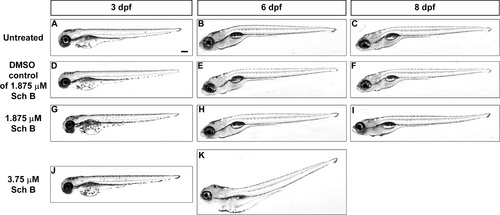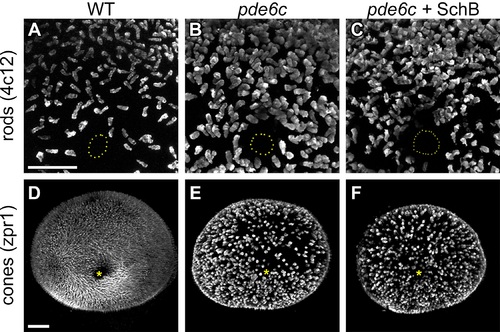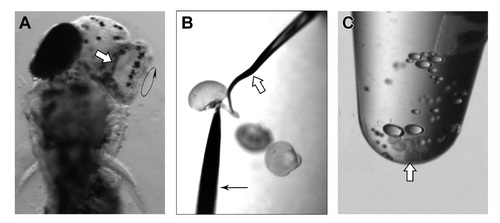- Title
-
A Naturally-Derived Compound Schisandrin B Enhanced Light Sensation in the pde6c Zebrafish Model of Retinal Degeneration
- Authors
- Zhang, L., Xiang, L., Liu, Y., Venkatraman, P., Chong, L., Cho, J., Bonilla, S., Jin, Z.B., Pang, C.P., Ko, K.M., Ma, P., Zhang, M., Leung, Y.F.
- Source
- Full text @ PLoS One
|
Optimization of SchB concentration for treating zebrafish larvae.The gross morphology of zebrafish larvae under different treatment schemes from 3 to 8 dpf. (A-C) untreated controls; (D-F) larvae exposed to the same volume of DMSO carrier as in the 1.875 µM SchB treatment; (G-I) larvae exposed to 1.875 µM SchB; (J-K) larvae exposed to 3.75 µM SchB. In each treatment group, the lateral view of a representative larva at 3, 6 and 8 dpf is shown. Larvae exposed to higher SchB concentrations, including 7.5 and 15 µM, died relatively rapidly (Table 1); hence, these samples are not shown here. Scale bar = 200 µm. |

ZFIN is incorporating published figure images and captions as part of an ongoing project. Figures from some publications have not yet been curated, or are not available for display because of copyright restrictions. |

ZFIN is incorporating published figure images and captions as part of an ongoing project. Figures from some publications have not yet been curated, or are not available for display because of copyright restrictions. PHENOTYPE:
|
|
Photoreceptor morphology in the pde6cw59 retinas with and without SchB treatment.Whole-mount immunostaining was conducted to evaluate the effect of SchB treatment on rods (A-C) and cones (D-F) in the pde6cw59 mutants. The rods were immunostained with anti-4c12 [22], whereas the red-green double cones were immunostained with anti-zpr1 [41]. In (A-C), a central-medial region of the retina is shown, and the optic nerve is highlighted by a dotted circle. In (D-F), the medial view of the whole retina is shown, and the optic nerve is indicated by a yellow asterisk. In all figures, dorsal is to the top. Scale bars = 50 µm. |
|
Microdissection of larval retina for whole-mount immunostaining.In this study, larval retinas were microdissected from 6-dpf larvae. First, the scleral region just outside the circumference of the pupil was severed from the lateral side of the larvae (black circular arrow in A) by a fine hook created and bent from a chemically-etched tungsten needle [39]. An example of this needle is indicated by the white arrow in (B). In the same figure, the black arrow indicates an insect pin of size 000 (Fine Science Tools, Foster City, CA). Three 6-dpf retinas are shown in the figure to give a reference of the relative size. After severing the scleral attachment from the lateral side (circular arrow in A), the RPE-attached retinas could be easily detached from the sclera by a gentle push from the medial side (A, white arrow). These RPE-retinas were then treated with acetone, which would further detach the RPE from the retinas. The detached RPE was removed from the retinas by the chemically-etched tungsten needle. (C) Finally, the dissected retinas (indicated by the white arrow) were collected in a microcentrifuge tube for downstream immunostaining procedure. |



